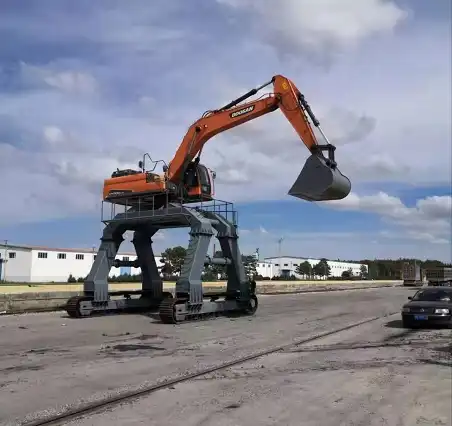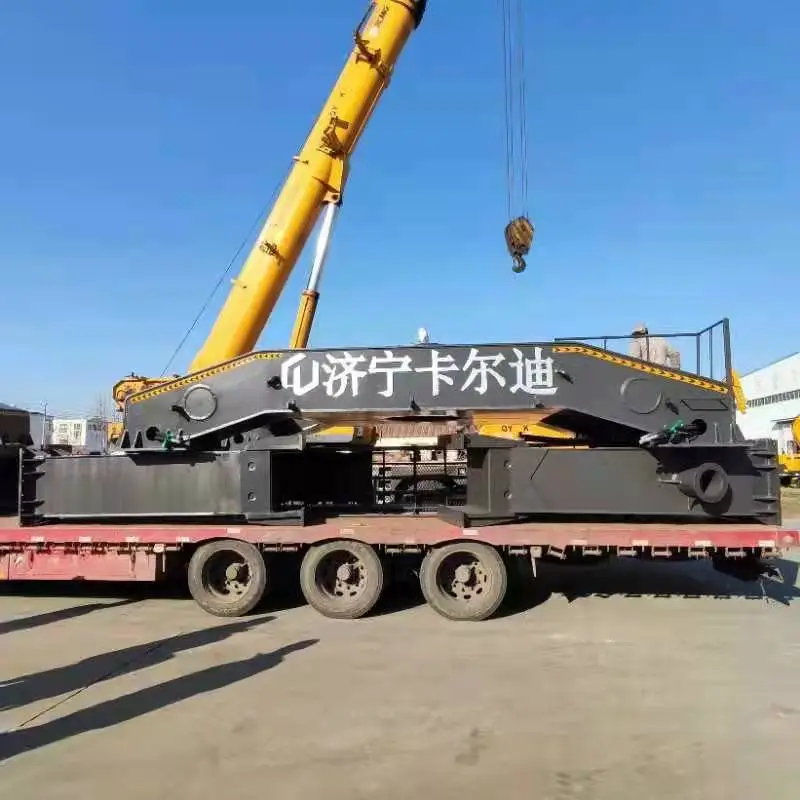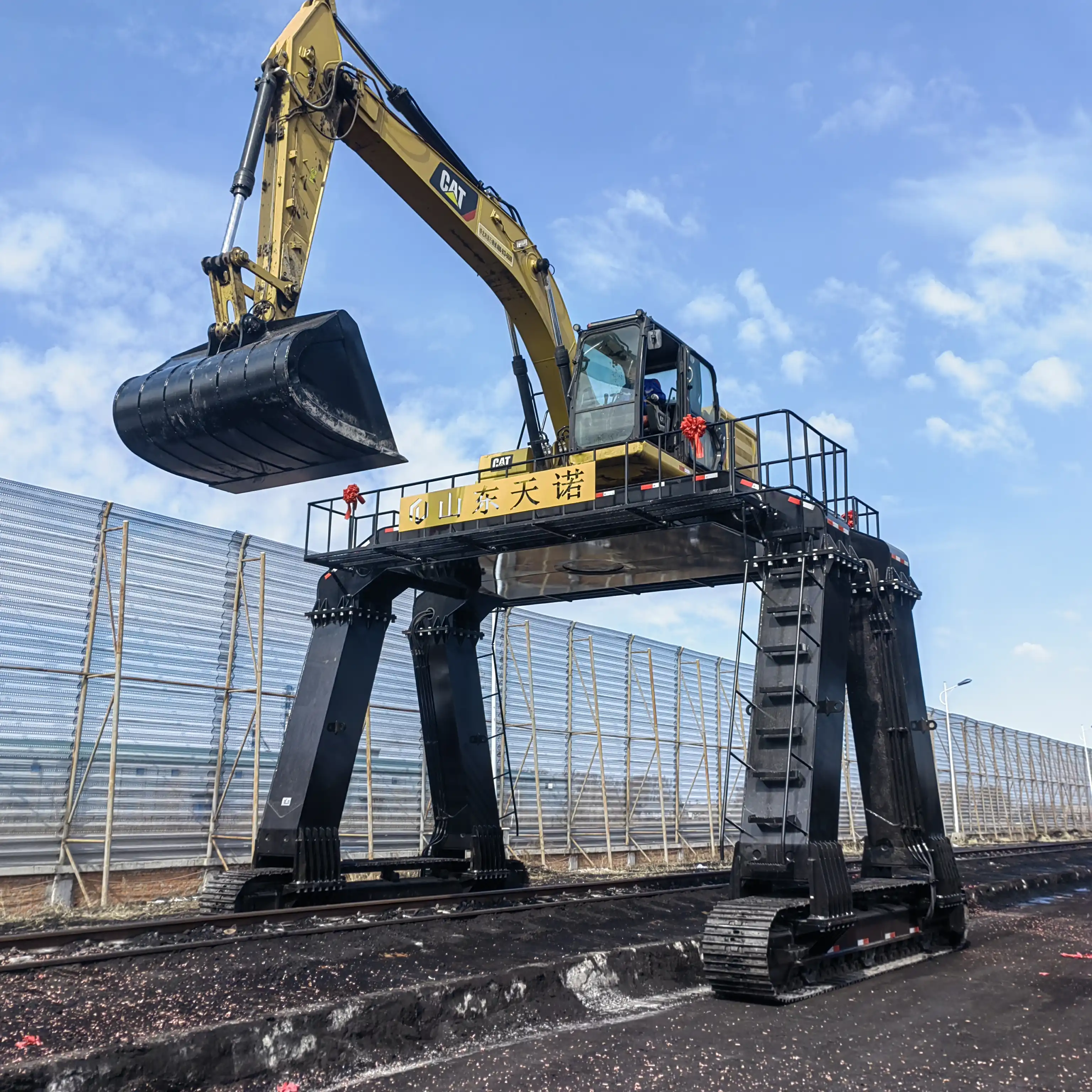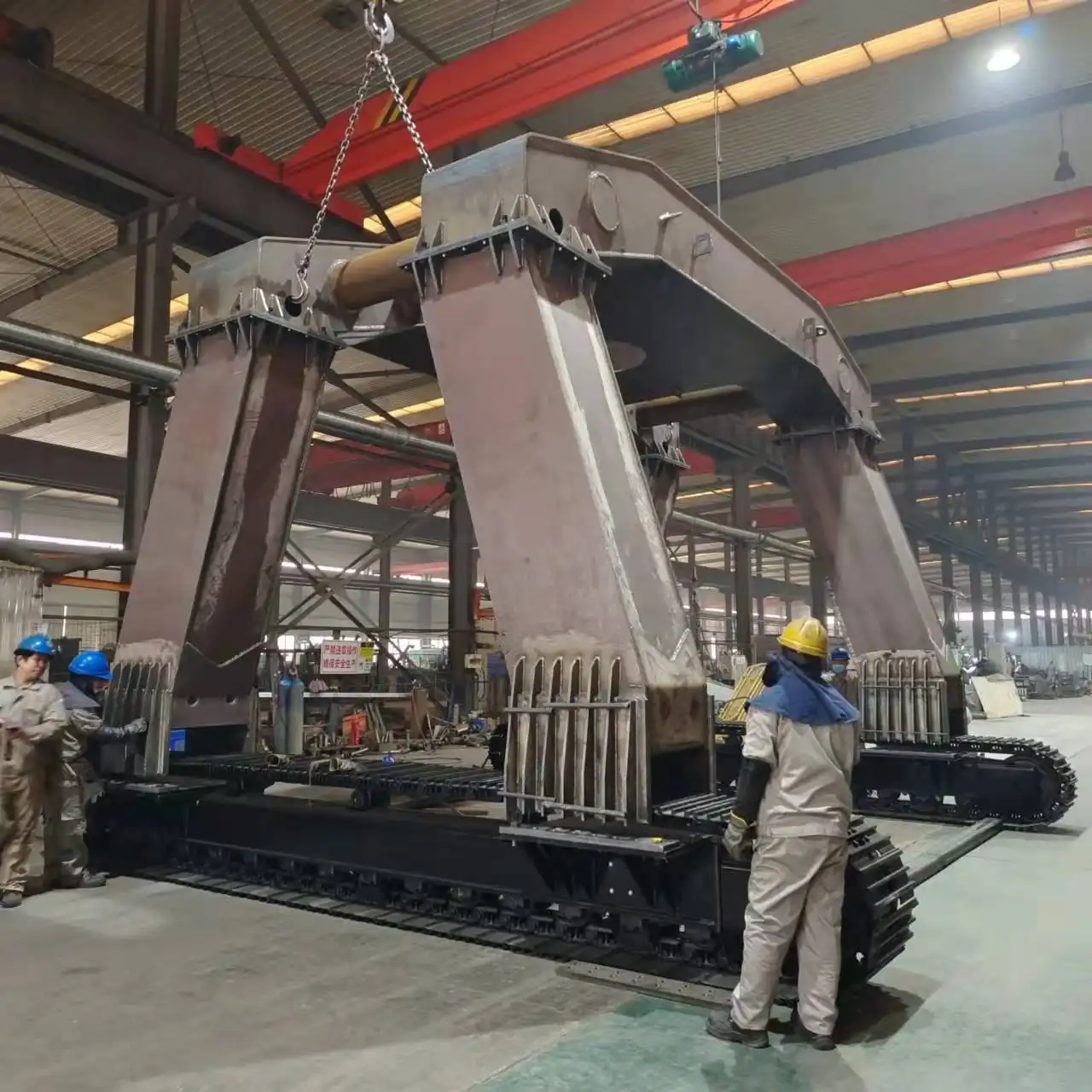How to build long legs for an excavator?
Building unloading train excavator long legs is a specialized modification process that transforms standard excavators into efficient train car unloading machines. These elevated chassis systems enable excavators to access and work directly with train cars, providing a 360° panoramic view for operators while maintaining stability during operations. The process requires careful planning, high-quality materials, and precise engineering to ensure both performance and safety.
To build effective excavator long legs for train unloading operations, you'll need to follow a comprehensive procedure that includes selecting appropriate materials, creating a structural design that supports the excavator's weight and operational requirements, and properly integrating the modification with the original excavator chassis. The result is a specialized machine capable of clearing train cars efficiently, with the ability to unload a car in just 5-8 minutes while maintaining a clearance height of approximately 4200mm.
Material Selection

High-Strength Steel Requirements
The foundation of any successful excavator leg extension project begins with selecting the right materials. For unloading train applications, standard structural steel isn't sufficient. These specialized extensions require high-strength steel with specific properties to handle the unique stresses of elevated train car operations.
The steel used must possess exceptional tensile strength, typically ranging between 600-900 MPa, significantly higher than conventional structural steel. This ensures the legs can support not only the excavator's weight (which can range from 13-40 tons according to Tiannuo's specifications) but also the dynamic loads created during operation. The material must resist deformation under constant stress while maintaining structural integrity during the repetitive motions of unloading operations.
Additionally, the steel requires specific wear-resistance properties since these extensions operate in abrasive environments with coal, minerals, and other bulk materials. Specialized alloy steels with chromium, nickel, and molybdenum are commonly used to provide this combination of strength and durability.
Welding Considerations
The joining processes for these high-strength materials demand specialized welding techniques. Traditional welding methods often create heat-affected zones that can compromise the material's integrity. For train unloading excavator modifications, manufacturers like Tiannuo Machinery implement precise welding protocols.
This includes preheating the steel to specific temperatures (typically 150-200°C depending on material thickness), utilizing low-hydrogen welding consumables to prevent hydrogen-induced cracking, and applying post-weld heat treatment to relieve internal stresses. The welding process must maintain the material's mechanical properties while creating joints that can withstand the cyclical loading experienced during train unloading operations.
Protective Coatings
Once fabricated, the long leg excavator components require specialized protective treatments to withstand harsh environmental conditions. Multiple-layer coating systems are applied, starting with sandblasting to SA 2.5 standard to create the proper surface profile.
Primer coatings with zinc-rich compounds provide sacrificial protection against corrosion, followed by intermediate epoxy layers for chemical resistance. Finally, polyurethane topcoats offer UV protection and additional chemical resistance. These coatings must maintain flexibility to accommodate the slight flexing of components during operation while providing long-term protection against the elements and abrasive materials being handled.
Structural Design

Load Calculation and Distribution
Creating effective unloading train excavator legs requires precise load calculation and distribution engineering. Engineers must first determine the static load (the excavator's weight) and dynamic loads (operational forces during material handling). These calculations inform the structural framework design.
The load distribution system typically incorporates a network of internal reinforcements and gussets that transfer forces evenly throughout the extension structure. This prevents localized stress concentrations that could lead to structural failure. The design must account for multiple load paths to ensure redundancy and safety factors typically ranging from 1.5 to 2.0 times the maximum expected operational loads.
Critical to these calculations is understanding the excavator's center of gravity and how it shifts during operation. Engineers map these movements to ensure stability under all working conditions, incorporating counterweights where necessary to maintain balanced operation when the excavator is elevated on its extended legs.
Height and Width Specifications
The dimensional requirements for train car unloading equipment are dictated by the specific railway infrastructure being serviced. According to Tiannuo's specifications, these systems typically provide an effective passing height of 4300mm and width of 4200mm, though these dimensions can be customized.
The height must allow the excavator to position itself above rail cars while maintaining sufficient clearance for safe operation. The width design accounts for standard railway gauge dimensions while providing stability during operation. The leg structure typically features a tapered design that's wider at the base than at the connection point with the excavator, creating a stable foundation.
The leg structure incorporates precise leveling mechanisms to ensure the excavator maintains proper orientation regardless of ground conditions. This may include hydraulic leveling systems or mechanical adjustment points that allow for fine-tuning during installation and periodic maintenance.
Safety Features Integration
Safety is paramount in elevated excavator systems for train unloading. The structural design incorporates numerous safety elements beyond mere strength calculations. This includes protective barriers mentioned in Tiannuo's specifications that prevent accidental contact with moving components and shield operators from debris.
Stabilization systems are engineered into the structure, including outriggers that can be deployed to increase the machine's footprint during operation, significantly enhancing stability. These stability systems connect directly to the main structural framework and transfer loads to the ground through reinforced contact points.
The design also accommodates emergency systems, including rapid shutdown capabilities and escape routes for operators. The structural framework includes integrated access points and maintenance platforms that allow for safe inspection and service of both the extension system and the excavator itself without requiring complete disassembly.
Installation and Integration

Chassis Modification Process
Integrating unloading train excavator legs with an existing excavator requires significant chassis modifications. The process begins with a complete assessment of the donor excavator's structural integrity, identifying attachment points that can bear the additional stresses of elevated operation.
The installation typically requires removing the original undercarriage while preserving critical components like the hydraulic systems, engine mounts, and control linkages. Precision cutting and machining create the proper mating surfaces between the excavator body and the new leg structure. This interface must be perfectly aligned to prevent uneven loading that could compromise both performance and safety.
The modification process incorporates specialized jigs and fixtures to maintain proper alignment throughout the installation. Temporary support structures hold the excavator body in position while the long legs are precisely positioned. Once aligned, these components are permanently joined through a combination of high-strength bolted connections and strategic welding according to engineered specifications.
Hydraulic System Adaptations
The excavator's original hydraulic system requires significant modifications to accommodate the new operational profile of an elevated train unloading system. Engineers must recalculate hydraulic pressures and flow rates to ensure proper function at the increased operating height.
Additional hydraulic circuits are typically installed to control leg stabilization systems, including outriggers or locking mechanisms that secure the extended legs during operation. These systems require dedicated control valves, pressure relief mechanisms, and safety interlocks to prevent inadvertent movement during critical operations.
The hydraulic reservoir may need expansion to accommodate the additional fluid volume required by the extended system. Engineers must also address heat dissipation concerns, as hydraulic systems operating at elevation may experience different thermal conditions than original designs. This often includes installing additional cooling capacity or thermal monitoring systems to prevent overheating during extended operation.
Testing and Certification
Comprehensive testing validates the integration's success before commissioning an excavator with long legs. This begins with static load testing, where the modified excavator is gradually loaded to operational capacity while engineers monitor structural deflection, hydraulic pressures, and component stress.
Dynamic testing follows, simulating actual working conditions, including movements at full extension, emergency stops, and operation under maximum rated loads. These tests verify both performance capabilities and safety margins, ensuring the machine can reliably unload train cars in the 5-8 minute timeframe specified by Tiannuo Machinery.
The certification process includes documenting all modifications, creating updated load charts specific to the modified equipment, and establishing maintenance protocols appropriate for the specialized system. This documentation becomes part of the machine's permanent record and informs operator training programs developed specifically for the modified equipment. All testing must comply with relevant industry standards and regulatory requirements before the machine can be placed into service.
FAQ
①What is the maximum excavator size that can be modified with long legs?
According to Tiannuo's specifications, their unloading train excavator long legs are applicable for excavators ranging from 13 to 40 tons, though customization options may be available for specific requirements.
②How long does it take to complete a long leg modification for an excavator?
While specific timelines vary based on complexity and customization requirements, Tiannuo Machinery typically completes custom modifications within 2-4 weeks from order to delivery.
③What is the typical lifespan of excavator long legs?
When properly maintained, high-quality excavator long legs constructed from special steel can last 8-10 years under normal operating conditions, though this varies based on usage intensity and environmental factors.
④Are there special operator training requirements for long leg excavators?
Yes, operators require specialized training to safely manage the different center of gravity, stability considerations, and operational techniques required for elevated excavator operation.
Contact Tiannuo Machinery

Building unloading train excavator long legs requires specialized expertise in materials, structural engineering, and integration techniques. These modifications transform standard excavators into highly efficient train unloading machines capable of clearing a car in 5-8 minutes while providing operators with excellent visibility and safety.
The process demands careful attention to material selection, with high-strength steel being essential for durability and performance. Structural design must account for load distribution, stability, and safety considerations unique to elevated operations. Finally, proper installation and integration ensure that the modified excavator performs reliably while maintaining operator safety.
For industries involved in railway operations, these specialized modifications offer significant efficiency improvements in material handling and train unloading operations. If you're considering upgrading your excavator fleet with long leg modifications for train unloading applications, contact Tiannuo Machinery at arm@stnd-machinery.com for customized solutions tailored to your specific operational requirements.
References
Construction Equipment Modification Standards for Railway Applications, 2023 Edition
Structural Engineering Principles for Heavy Equipment Modifications, Engineering Journal Vol. 37
Materials Selection Guide for Excavator Modifications, Materials Science Institute
Railway Industry Standards for Material Handling Equipment, 2024 Guidelines
Safety Protocols for Elevated Excavator Operations in Railway Environments, Safety Council Publication
About Author: Arm
Arm is a leading expert in the field of specialized construction and railway maintenance equipment, working at Tiannuo Company.

